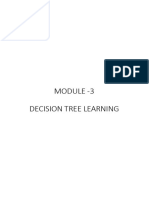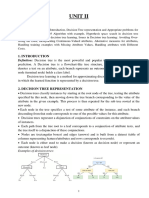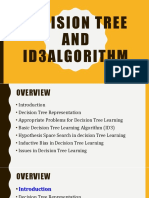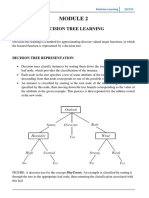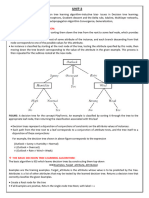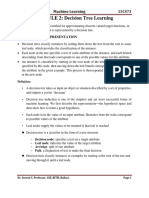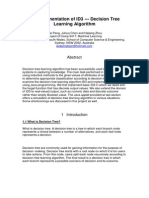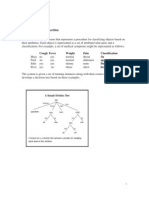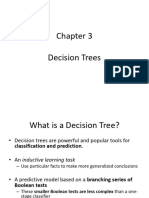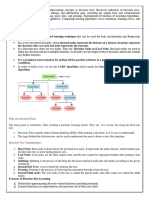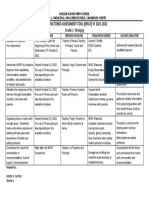0% found this document useful (0 votes)
17 views74 pagesUnit-3 MLT
Decision tree learning is a method for classifying instances by representing learned functions as decision trees, where each node tests an attribute and branches correspond to attribute values. The ID3 algorithm, which employs a top-down greedy search, is used to generate decision trees based on information gain, selecting the best attribute to classify examples. This approach is effective for problems with discrete outputs, attribute-value pairs, and robustness to errors and missing values in training data.
Uploaded by
ctanishka100Copyright
© © All Rights Reserved
We take content rights seriously. If you suspect this is your content, claim it here.
Available Formats
Download as PDF, TXT or read online on Scribd
0% found this document useful (0 votes)
17 views74 pagesUnit-3 MLT
Decision tree learning is a method for classifying instances by representing learned functions as decision trees, where each node tests an attribute and branches correspond to attribute values. The ID3 algorithm, which employs a top-down greedy search, is used to generate decision trees based on information gain, selecting the best attribute to classify examples. This approach is effective for problems with discrete outputs, attribute-value pairs, and robustness to errors and missing values in training data.
Uploaded by
ctanishka100Copyright
© © All Rights Reserved
We take content rights seriously. If you suspect this is your content, claim it here.
Available Formats
Download as PDF, TXT or read online on Scribd
/ 74

